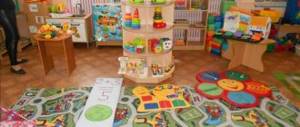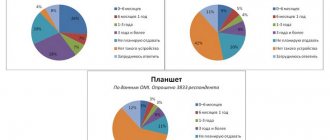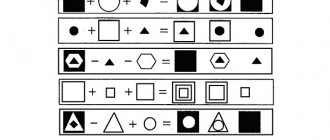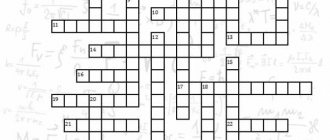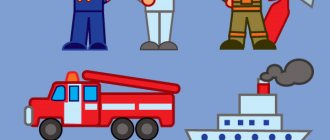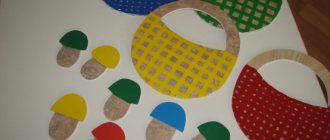Pictures with labyrinths have always attracted children. It's hard to say when they first appeared. However, it is reliably known that already in the first half of the last century, children were eagerly awaiting the latest issue of the Murzilka magazine in order to help a bee get to the hive or figure out which thread would lead to the desired ball.
Nowadays, teachers and child psychologists have developed entire sets of cards with labyrinths that contribute to the development of children of all ages. Of course, a drawn labyrinth for a three-year-old child is much simpler than a picture for a younger schoolchild. However, they all pursue the same goals.
You can print the labyrinth by right-clicking on the picture, selecting “save picture as”, saving it to your PC, opening and printing
What does a game with labyrinths develop?
In fact, all maze puzzles are quite similar. The child must find the correct and, as a rule, the only path from point “A” to point “B”, avoiding obstacles. In the process of solving this problem, the little man involuntarily develops such skills and qualities as:
- attentiveness;
- perseverance;
- patience;
- logics.
The notorious fine motor skills also develop in the process of such a game. After all, you need to use a pencil very carefully so as not to get confused in your own lines. And this, oddly enough, contributes to the development of speech, since the centers responsible for the movement of the fingers are located close to the speech centers.
Moreover, unbeknownst to himself, the child learns to make decisions, choose the only correct path, overcome and bypass obstacles that arise in his path. So we can assume that labyrinths also contribute to the acquisition of very important life skills.
All of the above applies to all similar logic games. But it is natural that cards with labyrinths for children of each age group also have narrower goals.
The benefits of labyrinths for children 5-6 years old
When letting the child go through the first maze, parents should explain to him the essence of the game. To begin with, the child must carefully examine the picture. Then he must look for the desired path by tracing it with his finger. And only then can you ask him to draw the desired path with a pencil. By the way, to work with labyrinths, it is better to give your child a pencil, and not a pen or felt-tip pen. This will make it easy to correct the mistake and not get confused by incorrectly drawn lines.
When working with a pencil, you need to make sure that the child stops before each turn and thinks through the future path, and does not draw a line at random. It is important, especially at first, to ask the little pioneer to tell him as he moves along why he chose this or that path.
What is all this for? Just for developing in a 5-6 year old child qualities and skills that are very important for later life:
- improving skills in using writing instruments;
- development of the notorious fine motor skills;
- training in determination, concentration and perseverance;
- development of attention and memory;
- development of logical thinking and imagination;
- the ability to logically explain one’s actions, expressing them in verbal form;
- the ability to make independent decisions and choices;
- developing the desire and ability to find a way out of difficult situations.
As you can see, playing with a labyrinth contributes to the development of qualities that are necessary for every person. However, parents should not be too zealous and give their child too difficult tasks. Some child psychologists argue that if a little person could not pass the maze, then this may reduce his self-esteem and level of aspirations in the future.
Labyrinths for children 3-4 years old
For very young children, simpler problems are usually used. Most often, the drawing on such a card is a fairly large labyrinth with wide “passages”, a large number of turns and dead ends. To make it more interesting for the baby, there are some funny characters. Going through such a labyrinth will not tire your child. And to make it easier for the little man, at this stage you should not force him to trace his path with a pencil. Let him first find the correct path with his finger, and then color it and the characters with colored pencils.
The purpose of such classes is not only the development of logical thinking. Often, in the process of completing such tasks, the child has to return to the starting point. In this way, the young person learns to find certain patterns. Such labyrinths also help in teaching orientation in space: turn right, turn left, and so on.
Game labyrinths for children 3-4 years old: printable for free
Labyrinths are one of the parts of the development of logical thinking in children. Therefore, it is necessary to include them in the compulsory program to prepare a child for schooling.
Peculiarities:
- Initially, it is necessary to use simpler options, then complicate them. Most often, huge labyrinths are offered with a large number of turns and dead ends so that the child returns to the starting point several times.
- This kind of task helps solve the main problem of children - to teach them some patterns, as well as generalization of certain objects according to some criterion.
- In this way, the child will develop in a timely manner and will also be able to explain the patterns that occur in nature. That is, why day follows night, and which product belongs to fruits and vegetables.
Labyrinths for kids
Labyrinths for children 4 years old
Labyrinths for children 4 years old
Labyrinths for children 4 years old
Labyrinths for children 5-6 years old
For this age, cards with more complex labyrinths are suitable. This is no wonder. After all, at the age of 5-6 years, children already begin to prepare for school, which means they must master the appropriate skills.
Of course, no one can cancel the funny characters here either. However, the labyrinths themselves are becoming more confusing, and the passages are narrower. At this age, it is no longer worth giving your child the task of coloring the desired path. The child must prepare his hand for writing, which means he must be able to draw a neat pencil line along the entire path.
To begin with, the child must carefully examine the picture and find that one and only path, and then draw it with a pencil. Thanks to this, he also develops memory.
Often, mazes for children of this age are a little more complicated with additional tasks. For example: a child must not only find a passage from one point to another, but also “collect” along the way any “prizes” drawn in the branches. Preschool children perform such tasks with great pleasure, completely unaware that at the same time they are actively developing their brain, preparing it for upcoming learning.
The benefits of labyrinth exercises for children 5-6 years old
There are many different types of labyrinths, but in this case we are talking about puzzles printed on paper. Essentially, these are pictures with funny characters who need to be led along intricate paths or thread lines to the desired goal.
Such puzzles are divided according to difficulty very arbitrarily. Here again, much depends on the developmental characteristics of the child. Some children, already at the age of three or four, can easily cope with mazes that say “For 5-6 years old.” At the same time, even some schoolchildren experience some difficulties when passing them. And, by the way, there is nothing wrong with that. The lack of ability to navigate labyrinths does not at all indicate a developmental delay.
Choosing a labyrinth for a 5-6 year old child is not as easy as it seems at first glance. For a child who will be playing with a puzzle for the first time, it is better to choose a simpler maze, even if it is not age appropriate. The second question: which labyrinth should you prefer – color or black and white? Oddly enough, at first it is better to give children a coloring puzzle. The baby will play with such a labyrinth with great pleasure.
For preschoolers who are already learning numbers, math mazes may be fun. Such puzzles are somewhat reminiscent of a game where you need to connect numbered dots to get a picture. The essence of such a labyrinth is to create a path using numbers (numbers) located in direct or reverse sequence. Digital mazes are not as fun as classic ones, so they are more suitable for diligent and diligent children.
Labyrinths for children 7-8 years old
Children grow up, go to school, and the labyrinths change along with them. In principle, for this age they are not so different from tasks for older preschoolers. The only thing they add is a learning element.
Teachers and psychologists have developed many labyrinths for younger schoolchildren, which allow them to better learn letters, numbers, the world around them, and even rules of behavior. For example, a child must find a way from one letter or number to the next one in a row (A-B or 1-2, etc.). There are also more complex tasks built on the same principle: for example, to walk a path along a road on which road signs are placed. And you must pass it, of course, observing all traffic rules.
Despite its simplicity, children often experience certain difficulties in the process of passing such labyrinths. This is due to the lack of necessary knowledge. Therefore, it is very important not only to give the child a task, but also to work out with him.
The goal of such classes is no longer so much the development of logical thinking as the knowledge of the surrounding world, its rules and patterns. During classes, the child learns to perceive information, analyze and apply it in practice.
Labyrinths for children 9-10 years old
Labyrinths for nine-year-olds and older are practically no different from those that adults still enjoy solving to this day by purchasing numerous brochures with puzzles. Of course, such puzzles also contain funny drawings, but they no longer carry the function of attracting the baby’s attention. Rather, it's just a design element.
Such labyrinths are designed to develop logical thinking, analytical abilities, as well as attention and perseverance. As a rule, if a child enjoyed going through mazes at a younger age, then he will be able to work on these puzzles on his own.
General rules for practicing with labyrinths
Nowadays, it is not difficult to find cards with labyrinths for children of all ages. True, I would like to warn you right away. Similar “labyrinth-like” games have also appeared in applications for various electronic gadgets. It’s absolutely not worth engaging a child with them. The baby will not receive any development from this, but quite a lot of problems may arise in the future.
As for ordinary paper cards with labyrinths, you should start with the simplest wire labyrinths with elements of coloring books. To begin with, you need to interest the baby in a new activity, and then give him a few colored pencils or felt-tip pens so that he can try to draw the character’s movement line himself. If he doesn’t succeed the first time, it doesn’t matter. Let him take a pencil of a different color and try again. When the path is completed, you can start coloring the path and pictures.
At the next stage, the child should be taught to find a way without wires. Let him first move his finger over the picture, and then just with his eyes. This is a very good exercise for developing logic, imaginative thinking, attention and memory. Having found the desired path, you can already take a writing instrument and draw a neat line. It is worth emphasizing that it is neat. After all, one of the goals of playing with mazes is to develop fine motor skills and prepare the hand for writing.
That's all the rules. There is one more thing though. Parents! Find time to engage with your children on your own. After all, such hours spent together cannot be replaced by anything later!
Why are paper mazes for children 5-6 years old better than electronic ones?
Recently, many websites and applications for mobile devices have appeared with computer games for children 5-6 years old, with the help of which the child can play with maze puzzles online. In the description of such toys, of course, you can read that they are all very useful, educational and completely harmless. And all this is true, however...
In addition to logic and attentiveness, a paper maze develops a lot of other skills and abilities of a five or six-year-old child. But “on-screen” analogues do not give anything like this to a child. Bright pictures do not allow the child to use his imagination, there are no incentives for memorizing anything, and achieving a goal is most often carried out by simply trying out options, which does not in any way contribute to the development of determination. Fine motor skills do not develop either, because when playing on a computer or tablet, only the baby’s index finger works. As a result, there can be no talk of any preparation of the hand for writing.
But, the most important thing is that many parents use computer games only to ensure that the child “does not bother” and thereby deprive the child of the most important thing - communication. Therefore, advice: even if you can afford to buy your own tablet for a child aged 5-6 years, do not transfer the educational process to this soulless device. Better print out a regular paper maze and spend time with your baby together!

